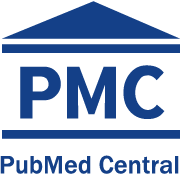Characteristics of mistreatment in medical students of a public university in Peru
DOI:
https://doi.org/10.17843/rpmesp.2016.331.2008Keywords:
Students, medical, Mistreatment, SchoolsAbstract
Objectives. To determine the characteristics of mistreatment in medical students of a public university in Ica, Peru. Materials and methods. Transversal research applied to a probabilistic sample of first to six year medical students at Universidad Nacional San Luis Gonzaga in 2012. A survey with 23 items in likert scale was designed to measure the perception of psychological, physical, academic and sexual mistreatment. Univariate and bivariate statistical analysis were implemented. Results. 281 students were surveyed. The perception of psychological maltreatment was 96.8%; academic, 86.8%; physical, 62.6% and sexual, 20.6%. Physical abuse increased during the surgical clinical studies term (p = 0.001). The doctors lecturers and medical residents were the main aggressors. More often, male students reported to receive tasks as a punishment, not to get the credits for their work, physical mistreatment, verbal threats, insults or taunts regarding their ethnicity. Sexual maltreatment events happened to women in a higher rate. Sexual mistreatment reports density was more frequent at the university (45.3%, p=0.002) and hospital (45.0%, p=0.046). Women stated not to know to whom or where to denounce the abuse (54.6%, p=0.042) and not to report it because it stopped (56.9%, p=0.048). Conclusions. There is a high prevalence of abuse in which the characteristics of students by sex, level of studies and aggressor allow to identify the types of abuse that medical students receive.Downloads
Download data is not yet available.
Downloads
Published
2016-03-23
Issue
Section
Original Article
How to Cite
1.
Munayco-Guillén F, Cámara-Reyes A, Muñoz-Tafur LJ, Arroyo-Hernández H, R. Mejia C, Lem-Arce F, et al. Characteristics of mistreatment in medical students of a public university in Peru. Rev Peru Med Exp Salud Publica [Internet]. 2016 Mar. 23 [cited 2025 May 11];33(1):58-66. Available from: https://rpmesp.ins.gob.pe/index.php/rpmesp/article/view/2008





























